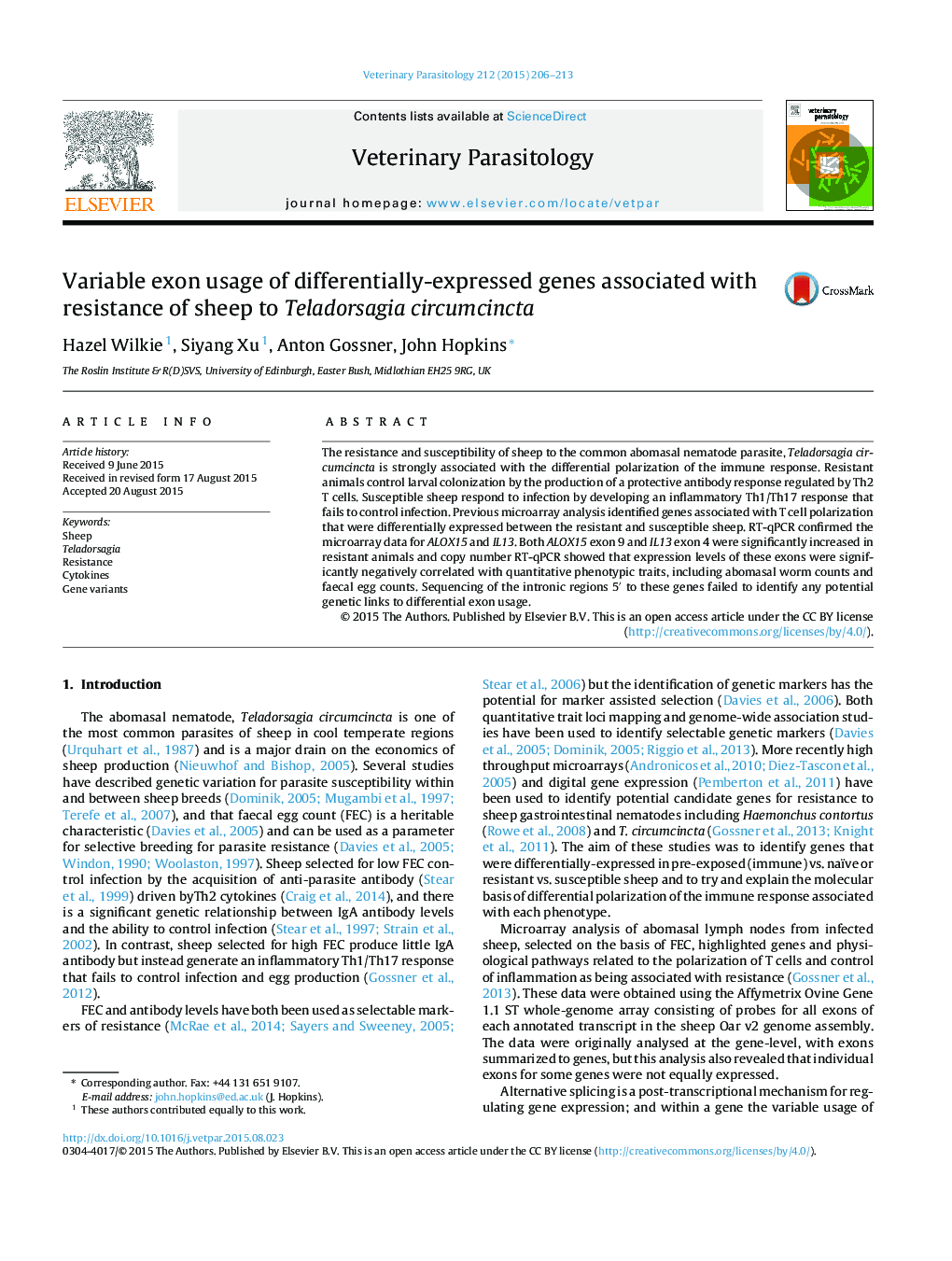| Article ID | Journal | Published Year | Pages | File Type |
|---|---|---|---|---|
| 5802352 | Veterinary Parasitology | 2015 | 8 Pages |
â¢ALOX15 and IL13 genes show differential exon usage in relation to resistance of sheep to Teladorsagia circumcincta.â¢Exon usage fully validated by relative RT-qPCR.â¢ALOX15 exon 9 and IL13 exon 4 levels show significant negative correlation with adult worm count and faecal egg count and positive correlation with body weight and IgA antibody.
The resistance and susceptibility of sheep to the common abomasal nematode parasite, Teladorsagia circumcincta is strongly associated with the differential polarization of the immune response. Resistant animals control larval colonization by the production of a protective antibody response regulated by Th2 T cells. Susceptible sheep respond to infection by developing an inflammatory Th1/Th17 response that fails to control infection. Previous microarray analysis identified genes associated with T cell polarization that were differentially expressed between the resistant and susceptible sheep. RT-qPCR confirmed the microarray data for ALOX15 and IL13. Both ALOX15 exon 9 and IL13 exon 4 were significantly increased in resistant animals and copy number RT-qPCR showed that expression levels of these exons were significantly negatively correlated with quantitative phenotypic traits, including abomasal worm counts and faecal egg counts. Sequencing of the intronic regions 5â² to these genes failed to identify any potential genetic links to differential exon usage.
Graphical abstractDownload high-res image (83KB)Download full-size image
